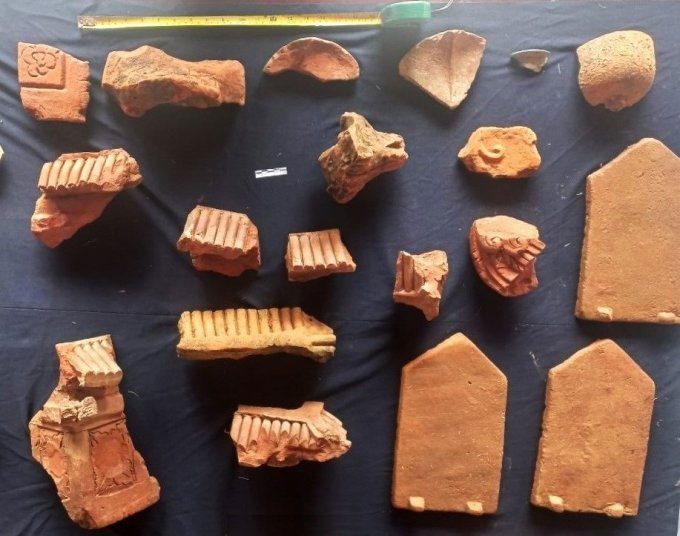Artifacts of an ancient temple with distinctive Tran Dynasty architecture found on a hill about 80km from the Vietnam-China border.
In early November, locals reported the discovery of several ancient artifact traces on a hill located 50 meters from the Gam River, in Bo Cuong village, Yen Phu town, Bac Me district. According to local legends, this area is home to a ruined ancient temple, prompting the Ha Giang Department of Culture, Sports, and Tourism to invite the Vietnam Academy of Social Sciences for an archaeological survey.
Participating in the survey team, Associate Professor Dr. Trinh Nang Chung from the Vietnam Archaeological Association stated that at the end of November, the team conducted searches at the top of the hill, which rises about 15 meters above the Gam River. This area is densely covered with vegetation, including bamboo and various other trees. Fallen leaves have created a thick layer that blankets the entire site.
The survey team discovered over 500 terracotta artifacts, including small towers, roof tiles, decorative materials, and household ceramics. Among these, there are fragments of a tower featuring a dragon head and 400 pieces of broken tiles shaped like sharp peaks and lotus petals, characteristic of the decorative style from the Tran Dynasty, specifically the 13th to 14th centuries. Notably, there is a thin decorative tile adorned with lemon flowers, chrysanthemums, and vines on the surface.

Roof tile artifacts discovered in Ha Giang. (Photo: Trinh Nang Chung).
Regarding stone artifacts, the survey team found 12 stone blocks used as column bases, with an average size of 45-50 cm in diameter and 25-35 cm in thickness. One block has a flat surface, circular shape, with a raised circular border that stands 4 cm above the surrounding surface. The diameter of the raised circular section is 40 cm, corresponding to the diameter of the wooden column that would have been placed on it. These artifacts were found on the ground surface.
The team then dug a test pit of about 2m2, 45 cm deep, located more than 10 meters east of the hill’s center, where they uncovered over 250 additional tile fragments, including six fairly intact tiles, indicating that this site was the location of a collapsed ancient temple roof. An expanded search around the hill revealed stone embankments.
PGS Chung assessed that the hilltop once housed a large ancient temple, dating back to the Tran Dynasty. “This temple holds significant historical, cultural, and social value for the nation of Dai Viet. Its presence is meaningful in marking the cultural footprint of Dai Viet in the border region, affirming our nation’s cultural sovereignty awareness from thousands of years ago,” stated PGS Chung.


















































